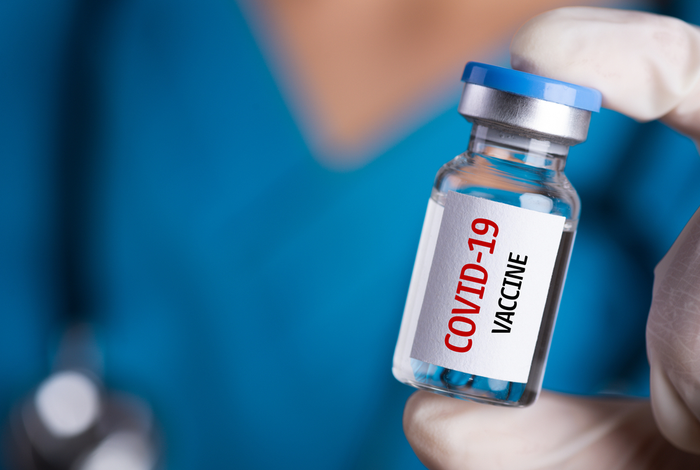
UPDATE: Australia has nearly reached a 90% vaccination rate.
When it comes to trying to find and produce a vaccine for the novel coronavirus responsible for COVID-19, it’s all hands on deck. Labs around the world are working on hundreds of possible vaccine candidates that can move forward to testing and further scrutiny. The search for a vaccine is usually a process that takes years or even decades to accomplish, but the COVID-19 pandemic has brought virologists, immunologists and other scientists together in an all but unprecedented manner in order to allow life to return to whatever the new normal is in record time.
A vaccine could inoculate the public so their immune system could recognise and fight off the virus before it could take hold, ending social distancing measures, isolation, working from home and the crippling effects the virus is having on the economy of many countries.
Of course the speed at which the search for a vaccine has been progressing comes with some problems of its own, not least of them being the sheer amount of conflicting or outright erroneous information circulating the Internet. Stories of vaccines being released untested, being damaging, potentially spreading the virus or being unnecessary are all too common, and while the speed of trying to find and ready a COVID-19 vaccine has put a time pinchon the process, it’s not one that is being approached with a lack of professionalism and the utmost care.
When Will We Have A Vaccine?
With hundreds of potential vaccines being developed and more than a handful (eight at the time of writing) in phase one testing, it may seem like the vaccine will be arriving soon, but that depends on a number of factors, not the least of them being successful human trials and safety testing. If, and only if one of the vaccines currently being tested proves effective in initial trials we could potentially have a vaccine by the end of 2020 or early in 2021.
The scientists working on the various potential vaccines are having to balance urgency with caution, speeding development but still adhering to rigorous protocols and testing to ensure both efficacy and safety. This is the point that seems to be causing some of the major contention about the vaccine, with many online claiming that the development of the vaccine is all but deregulated to speed up the process, cutting the need for testing and safety measures to help the vaccine be developed faster. This is patently untrue.
Testing of the virus is one of the reasons that the vaccine could arrive far later than anyone would like. Testing a COVID-19 vaccine is especially hard as with people at home, sheltering in place or self-isolating are unlikely to encounter the virus - something that needs to happen to gauge the efficacy of the vaccine. Deliberately exposing people to the virus to test the efficacy of the vaccine is possible, but given the potential effects the virus can have, deliberate infection can be problematic to say the least.
How Does Testing Work?
Typically a vaccine will progress through animal testing and then through three stages of clinical testing, but COVID-19 is proving to be a problem at the very first step. Normally animal testing is done on mice and rats, but unfortunately these two animals aren’t applicable for one simple reason. SARS-CoV-2, the virus responsible for COVID-19 gain entry into cells via something called an ACE-2 receptor, something not found in rodentia. Rhesus monkeys and cats have ACE-2 receptors, but difficulty obtaining these animals, and ethical concerns makes animal testing a difficult prospect.
Once a vaccine enters clinical testing it typically works through three stages. Phase one involves a small number of healthy volunteers, and if that is successful the testing progresses to a larger phase two which will see the vaccine given to a few hundred people in an outbreak area. If phase two is successful, testing will then progress to phase three, a repeat of phase two but with thousands of subjects rather than hundreds. Phase two and phase three testing and analysis can take significant time, so consertvative estimates from professionals put the release of a vaccine between 18 and 24 months from the start of development.
One piece of testing that can’t be done given the reduced timeline in which the vaccine is needed is gauging the duration of efficacy of the vaccine. While some vaccines have long lasting effects, others require boosters throughout a vaccinated person’s lifetime. Developing, testing and releasing a vaccine in a truncated time means that when the final vaccine is released there will be no real knowledge of how long the vaccination lasts. These details will become available over time as previously vaccinated people either contract the virus or are tested and show a lack of COVID-19 antibodies, but how long that will take is a question nobody can really answer at the moment.
COVID19clinics.com.au , the 1st online listing of Coronavirus clinics in Australia. Find your COVID-19 clinic near you.
Where Are We on the Development Timeline?
In the months since a Chinese lab first decoded the SARS-CoV-2 genome, a number of vaccines have entered phase one testing. The frontrunner at the moment appears to be by US company Moderna. They have successfully completed phase one trials and have submitted the protocols for their phase two testing to the FDA (the Food and Drug Administration - the oversight body in the US responsible for approving new drugs and medications) for approval.
An Australian vaccine being developed by the University of Queensland and the CSIRO is looking to move into phase one testing in June.
Although a vaccine for COVID-19 is not yet available, treatment is still available for those who contract the disease. If you think you may have contracted COVID-19, you can find a clinic specialising in treatment of the virus and book an appointment through COVID19clinics.com.au .